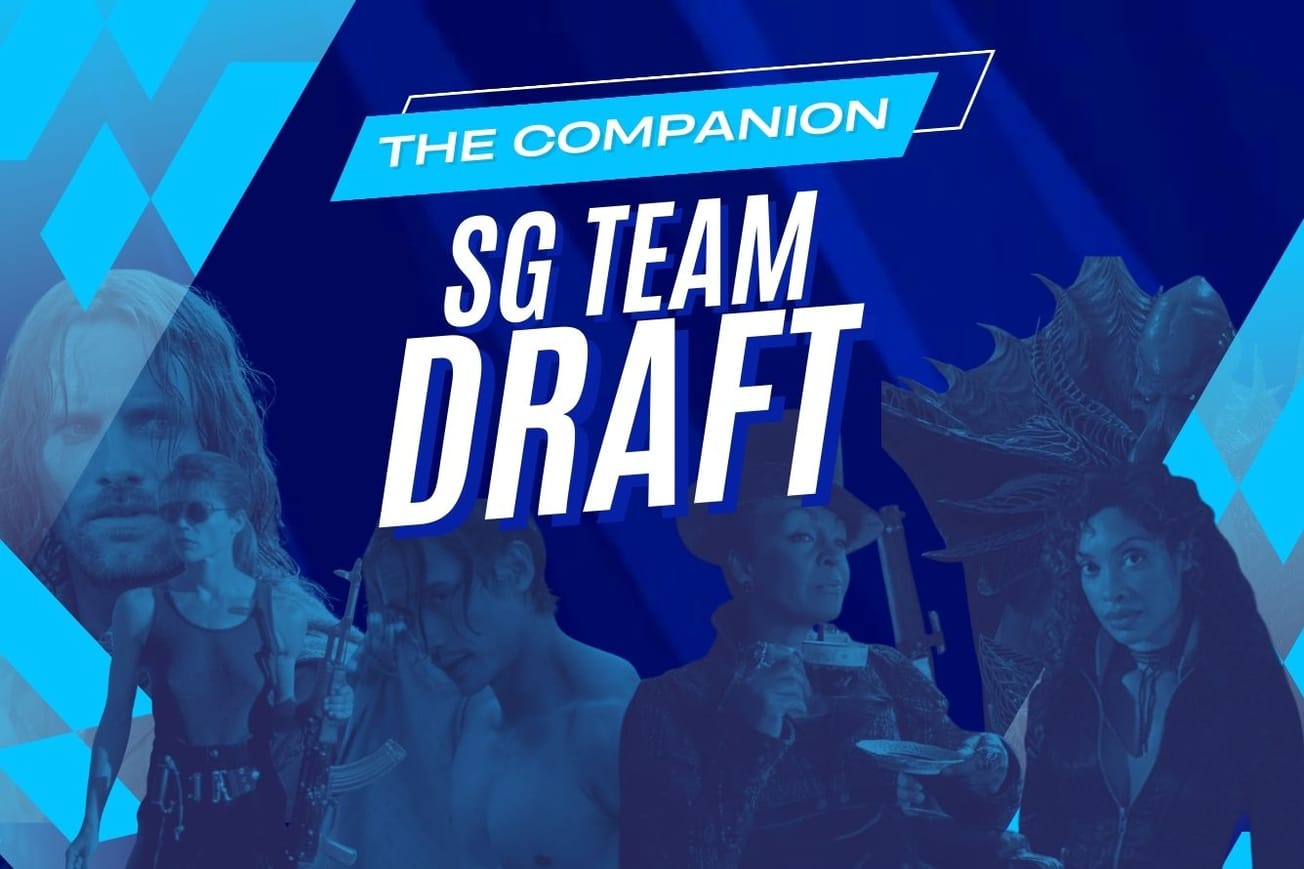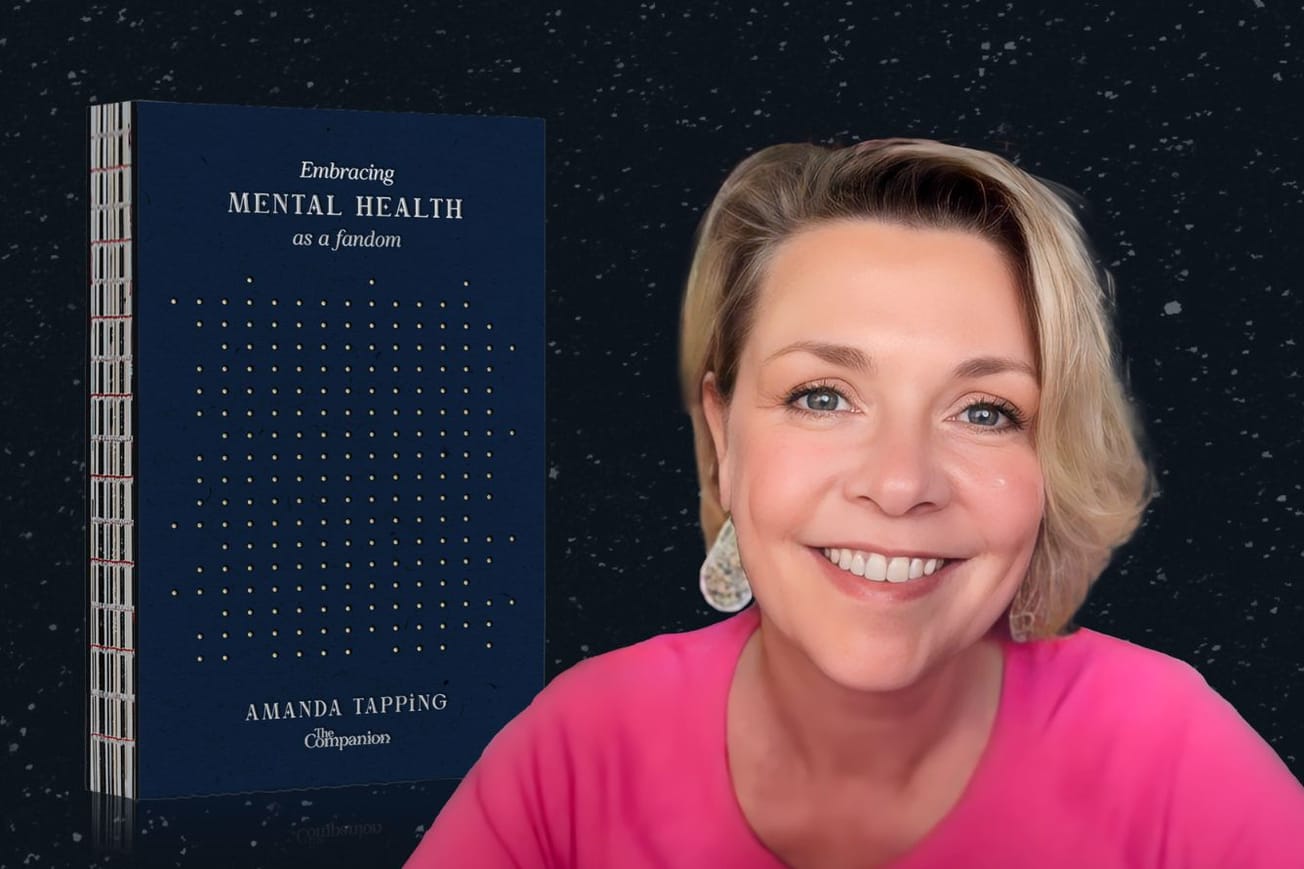After Stargate SG-1 had wound down, series co-developer and former showrunner Brad Wright turned his energies to a dream project, looking not forward but back.
As originally aired on Showtime in 1997, the pilot episode ‘Children of the Gods’ had been a huge popular success—but a lingering source of creative dissatisfaction to Wright. This gnawed at him sufficiently that he returned to the editing bay with veteran cutter Brad Rines, pulled the pilot apart, and reassembled it to his liking, as indicated by its new subtitle: ‘The Final Cut.’
Since both the MGM DVDs of Stargate SG-1 and VEI’s Blu-Ray edition begin with the as-aired version of ‘Children of the Gods,’ the Final Cut stands to one side as a supplement, one of the great what-ifs of TV science fiction. It also has the best video clarity of the three. In his DVD commentary, Wright names no names but depicts an editorial tug of war that can only have involved co-creator Jonathan Glassner, with whom Wright parted company in mid-series, with Glassner demoted to ‘executive consultant.’
The adjective Wright likes to use for the Final Cut is “tighter” and it certainly is that: 92 minutes to the somewhat lumbering 97 minutes of the original edit. But although he wielded a sharp scalpel on ‘Children of the Gods,’ Wright sometimes subtly broadens its pace in ways we shall elaborate, elevating moments that illuminate character in lieu of the original’s straightforward action orientation.
Wright’s changes are so myriad and subtle, often employing alternate takes or different coverage —for instance, the officious Major Samuels (Robert Wisden) is no longer upstaged by a tree branch in his first appearance—that it would be tedious to attempt to catalog all of them. However, four salient purposes can be identified, in no particular order:
- Restore Joel Goldsmith’s original music, largely unheard in the 1997 edit
- Radically diminish the misogyny of the broadcast version
- Severely redact expository dialogue
- Give the unrelentingly downbeat 1997 arc a more upbeat conclusion
As Wright observes in his commentary, the original scenario of ‘Children of the Gods’ was one in which Jack (Richard Dean Anderson) and Daniel (Michael Shanks) lose, lose and then lose again. Wright remediates this by having O’Neill and Teal’c (Christopher Judge) destroy one of the Goa’uld death gliders, leaving the other one to Kowalsky (Jay Acovone), as in the original. And instead of ending on the possessed Kowalski’s glowing eyes, the 2008 edit closes with this hopeful interchange:
Daniel Jackson: She’s out there somewhere, Jack.
Jack O’Neill: I know. So’s Skaara.
Daniel Jackson: So what we do?
Jack O’Neill: We find them.
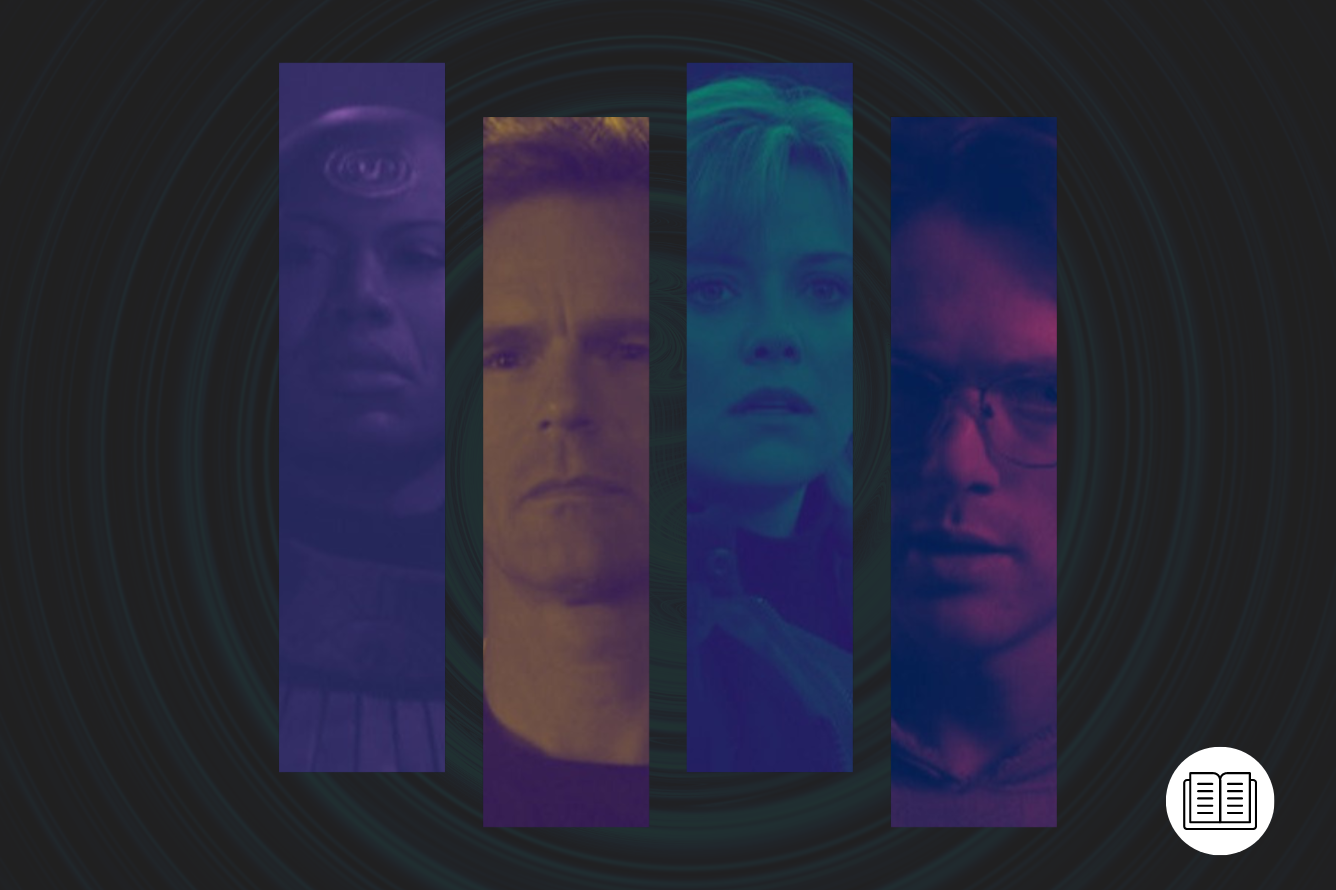
Dropping Exposition and Rewriting Samantha Carter
But we’re getting way ahead of ourselves. The difference between the two edits is dramatic from the outset. The Final Cut opens with a brand-new CGI shot of Earth as seen from orbit, with a sunrise in the background. Wright then cuts into director Mario Azzopardi’s lengthy crane shot of bored, card-playing US Air Force guards right on the utterance “Queen to the King”: very apt, as the plot will be driven by the tyrant Apophis’ (Peter Williams) hunt for a new host for his queen, Amaunet.
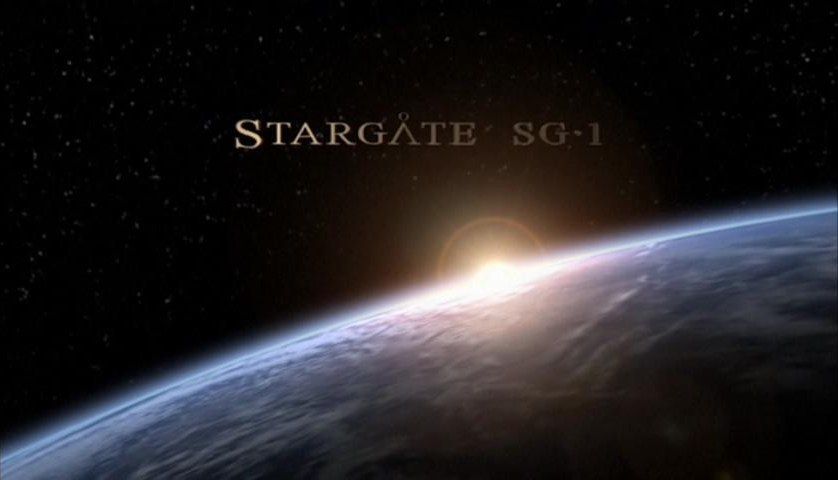
When Jack O’Neill (Richard Dean Anderson) is summoned to meet General Hammond (Don S. Davis, to whom the Final Cut is movingly dedicated), we get our first taste of how ruthlessly exposition will be pruned away. In the original, the two men exchange the following pleasantries:
Major Samuels: General Hammond, Colonel Jack O’Neill.
Jack O’Neill: Retired.
General Hammond: I can see that. I envy you. Me, I’m on my last tour. Time to start gathering my thoughts together. Maybe write a book. You ever think about writing a book about your exploits in the line of duty?
Jack O’Neill: I’ve thought about it. But then I’d have to shoot anybody that actually read it. [Awkward pause] That’s a joke, sir. Most of my work the past 10 years was classified.
General Hammond: Of course.
Jack O’Neill: Major Samuels mentioned something about the Stargate?
General Hammond: Down to business. I can do that.
Wright reduces this to five brief sentences. It’s a pity that we lose our first example of Jack’s trademark sarcasm, his survival mechanism, but Wright has no patience for talk that he finds too “pilot-y” and, upon repeated viewings of the 1997 cut, one sympathizes. Alas, there’s little Wright can undo about our humorless introduction to Hammond. Davis was directed to act as a “by the book” commander by Azzopardi, whom he later described as “a man of very limited imagination.”
(A scene in the Cheyenne Mountain morgue, incidentally, is lengthened to reveal the corpse of a female Serpent Guard, one of Apophis’ cohort. It’s an interesting editorial choice, especially as female Jaffa would not be referenced again for most of the series.)
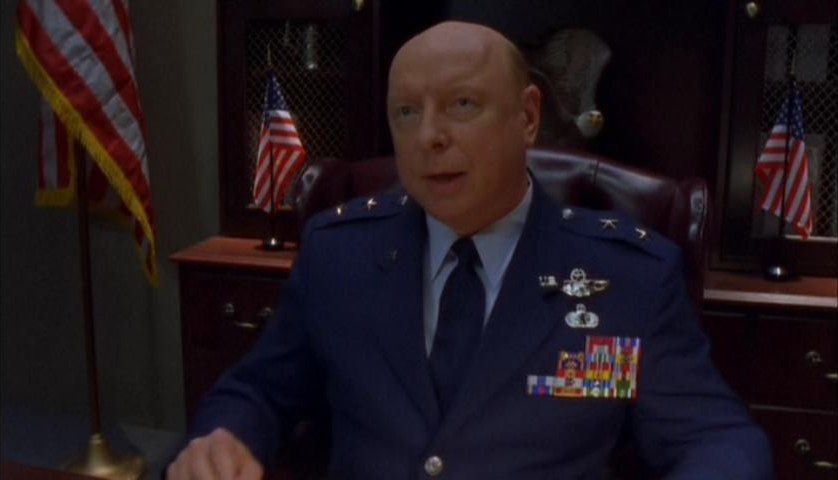
If Hammond comes across as off-puttingly hard-assed, Capt. Samantha Carter (Amanda Tapping) is a verbal sledgehammer in the original. Her long, gauche, and notorious exchange with O’Neill and his subordinates is so infamous it not only won’t be reprised here but was the subject of parody in subsequent Stargate SG-1 episodes (‘Moebius’, S8, Ep19-20) and ‘200’ (S10, Ep6). Tapping’s sneering delivery and chip-on-the-shoulder attitude come over less as a comment on the grating dialogue than as a parody of feminism.
During a recent Chicago appearance, Tapping said she didn’t dare protest the script because she was on a ‘pilot contract’ and could be replaced willy-nilly if Stargate SG-1 went to series. When it did, she put up more of a fight, even if it wasn’t enough to prevent ‘Emancipation’ (S1, Ep4)… but we digress. (In syndication, the then-Sci-Fi Channel radically solved the problematic “reproductive organs on the inside” scene by cutting it entirely!) In his DVD commentary, Wright says that in the original editing, he kept taking the offending lines out, only to have Glassner keep putting them back.
Suffice it to say that, while Carter loses her dramatic reveal in the Wright re-edit, she regains her dignity, with the troublesome exchange deftly pared to the essentials. And after Carter offers facetiously to arm-wrestle O’Neill, Wright holds on both Tapping and Anderson as smiles subtly crease their faces, a sign of dawning mutual respect and a nice new touch.
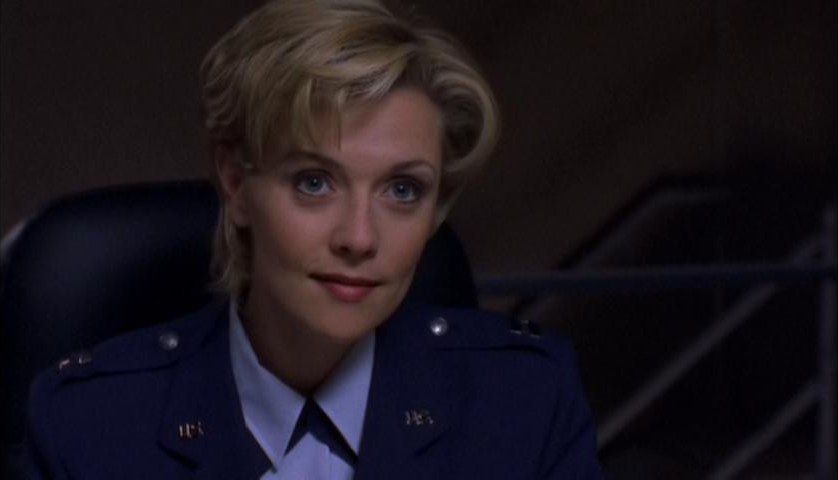
Carter grows both by verbal subtraction and visual addition. Wright deletes a sexist exchange with O’Neill that prefaces her first passage through the gate and mercifully cuts her “I think I’m going to be sick” upon arriving on the other side. New to ‘Children of the Gods: The Final Cut’ are her looks of wonderment upon first seeing a dialing device and while videotaping the hieroglyphics on Abydos, whereas she comes across as a full-on geek in the original. Wright also drops Carter’s famous in-joke MacGuyver reference, now having her “jerry-rig three supercomputers” instead.

Daniel Jackson and Life on Abydos
One character who requires and receives little modification is Dr. Daniel Jackson (Michael Shanks), although Wright does restore a scene in which Hammond nastily informs Jackson that his desert garb “stinks.” Although the SG-1 ensemble gels remarkably well in its first outing, Shanks deserves to be singled out for really nailing the sensitive and humane Dr. Jackson from the get-go. By contrast, Christopher Judge was still feeling his way with Teal’c, as evinced by the replacement of his entire voice track. For the most part, Judge must convey–skillfully—Teal’c’s inner conflict via conscience-stricken closeups.
Daniel’s introduction brings with it Wright’s most significant elaboration on the pilot, the Abydonian banquet scene, originally trimmed to an exchange between O’Neill and Skaara (Alexis Cruz) about “moonshine.” Expanded to an islet of joy amid the surrounding violence, the Wright edit begins with a closeup of a defunct MALP (“Property of USAF”) now doing duty as a serving dish.
Jack O’Neill: I’m sure the folks at MIT would be happy to know their million-dollar probe also makes fine cookware.
Daniel Jackson: Well, it got pretty banged up when it came through the gate into our barricade, so we made use. It is non-stick titanium, so…
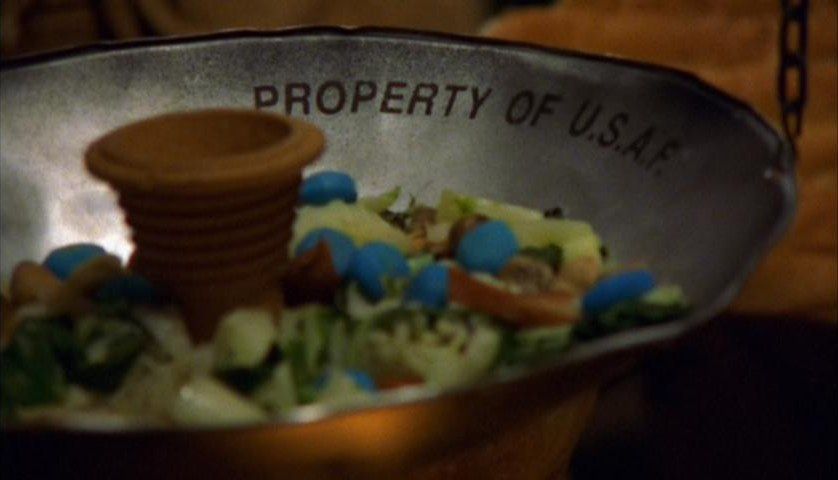
Fleshed out with additional dialogue and reaction shots, the banquet becomes more of a character vignette. In this, it embodies the change of emphasis from 1997 to 2008. The newer cut is more humane and, despite its shorter running time, more (pardon the pun) spacious.
In trimming ‘Children of the Gods,’ Wright eliminates a half-dozen establishing shots repurposed from the original feature, replacing the initial reveal of the Abydos pyramid with an impressive, new, angled CGI shot of it. There’s also a new establishing shot of Chulak, complete with a Goa’uld spacecraft fly-by.
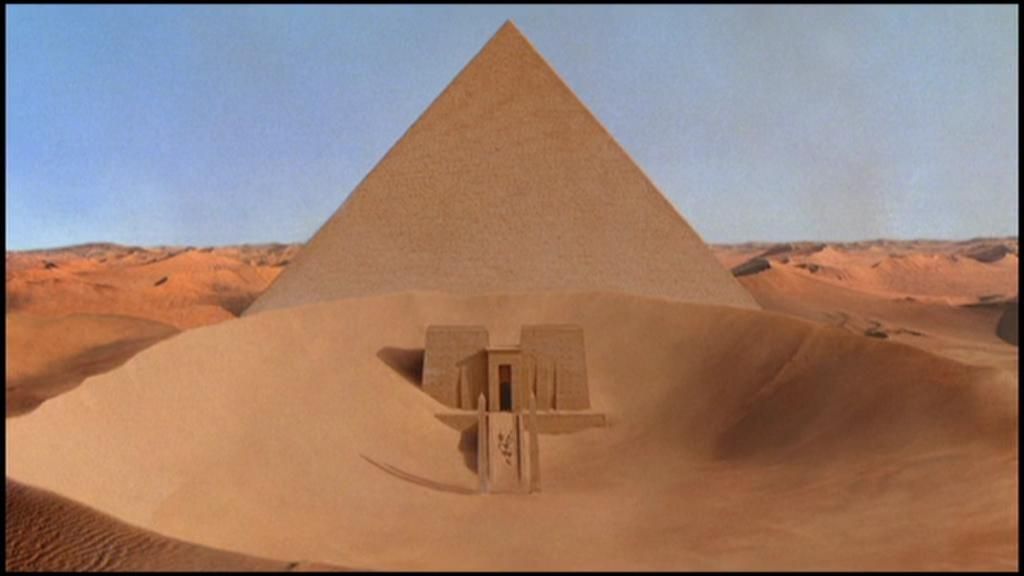
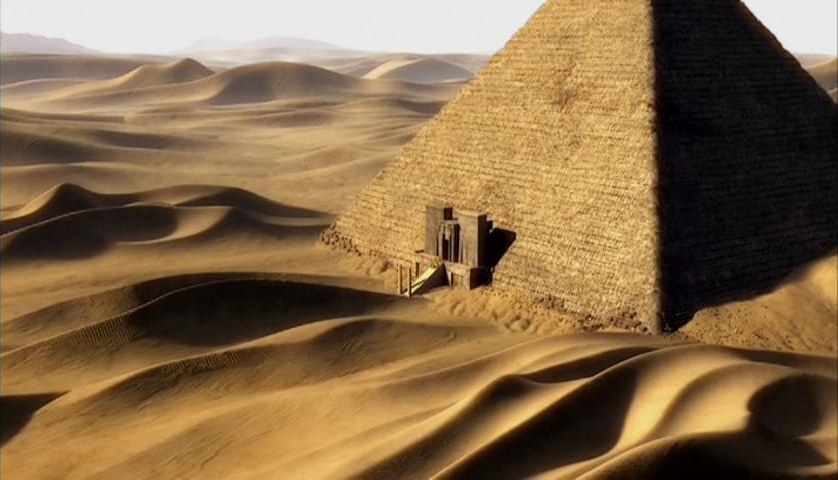
Among the things we don’t miss are two lurid scenes in Apophis’ harem, an unfortunate whiff of Sax Rohmer that Wright elides. Also, the implantation of Sha’re (Vaitiare Bandera) with the Goa’uld of Amaunet has lost its still-startling nudity, which even in 1997 was highly out of character for what would quickly become a family show. The 2008 re-edit manages to convey as much shock value with much less bare skin. (Wright also intercuts the Amaunet and SG-1 storylines so they plan in parallel, in contrast to the ploddingly linear manner of the original cut.) The violation of Sha’re still makes uncomfortable viewing but the horrific nature of symbiote implantation, once seen, would reverberate through the remainder of the series.
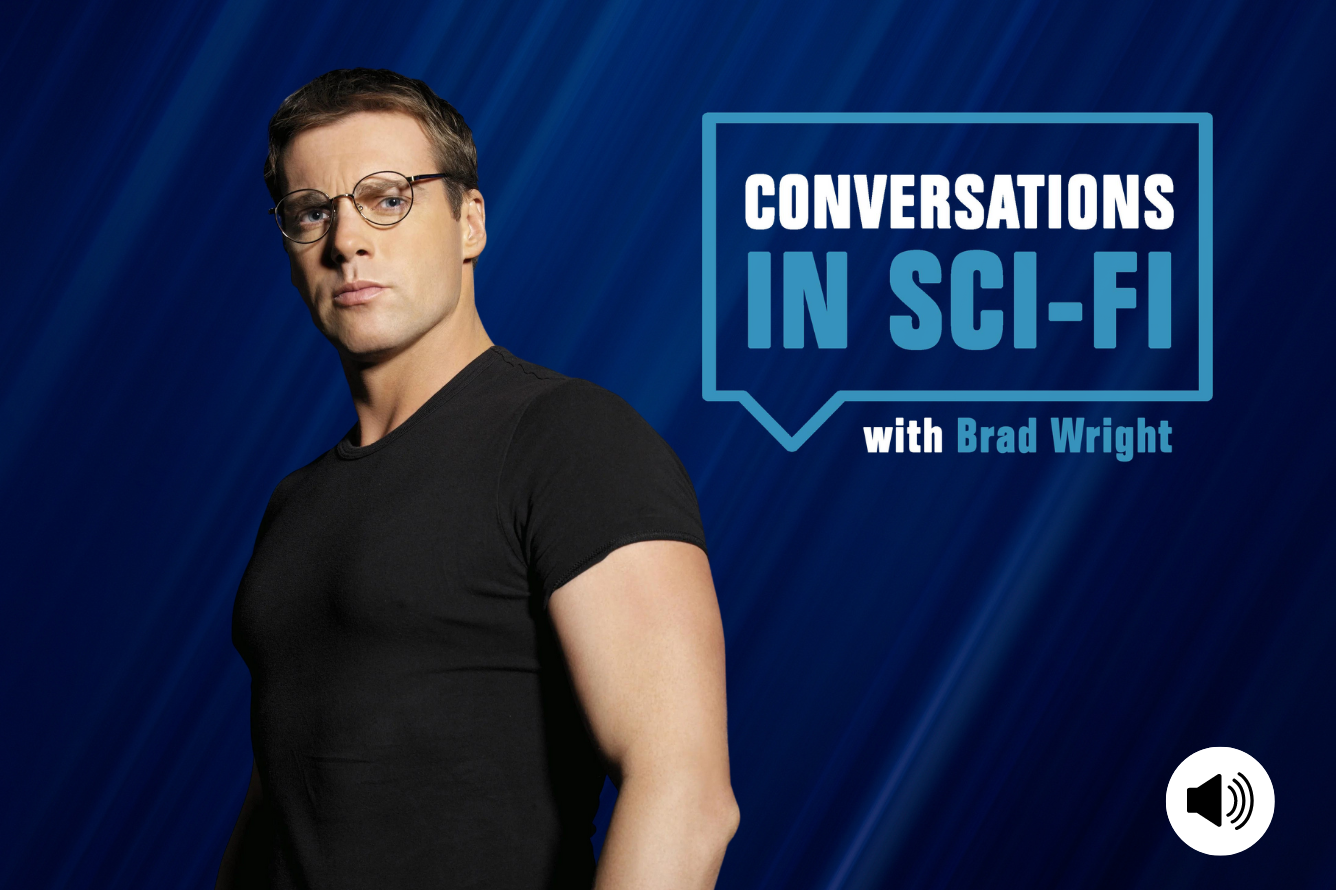
Restoring Joel Goldsmith’s Score
According to Wright, his initial motivation was to put Joel Goldsmith’s custom-made score in place as originally spotted and composed. MGM, having already paid US$17 million for the Stargate feature film, felt in its finite wisdom that David Arnold’s movie soundtrack should be recycled for the series. Heard in its original context, Arnold’s music is one of the greatest film scores ever but MGM’s music editor laid it over ‘Children of the Gods’ with a trowel, wallpapering the pilot. (Wright is blunter: “It was just noise.”) Not only does it roar irrelevantly, regardless of what is happening onscreen, but it is also mixed at such a high level that it fights the dialogue, unlike the Goldsmith score. The latter is by definition an improvement and one of the leading features of the restoration.
The original edit placed great emphasis on the ‘ticking bomb’ nature of SG-1’s rescue mission to Chulak, particularly its 24-hour time frame, one which eventually requires O’Neill and his team to accomplish implausibly much in the space of two final hours. With some subtle redubbing and a good bit of recutting, Wright makes the timeline of the expedition more credible, while also showing that O’Neill is prepared to face the worst:
Jack O’Neill: You still got that transmitter?
Samantha Carter: Sure.
Jack O’Neill: All right, we might have to destroy it. If we can’t find a way out of here the mission’s a bust anyway and we don’t want Apockhead or whatever his name is to get his hands on the thing.
Samantha Carter: Well, he still wouldn’t know the code. There’s half a billion permutations.
Jack O’Neill: Don’t take this personally but … they’re way smarter than we are.
While Azzopardi is most in his element in action scenes, Wright condenses the climactic battle at the Chulak Stargate noticeably and radically condenses the denouement. Three changes of varying importance should be noted. First, we no longer see Kowalsky getting snaked by a Goa’uld, which is not of consequence in the recut but anyone immediately following it with the Stargate SG-1 episode ‘The Enemy Within’ (S1, Ep2) would be right to feel baffled. (The 1997 edit is for the Stargate novice, and the Final Cut for the initiate.) Second, Wright omits the shot of Teal’c surrendering his staff weapon to Carter, a grace note that presages his future esteem for her as a “warrior of skill and cunning.”
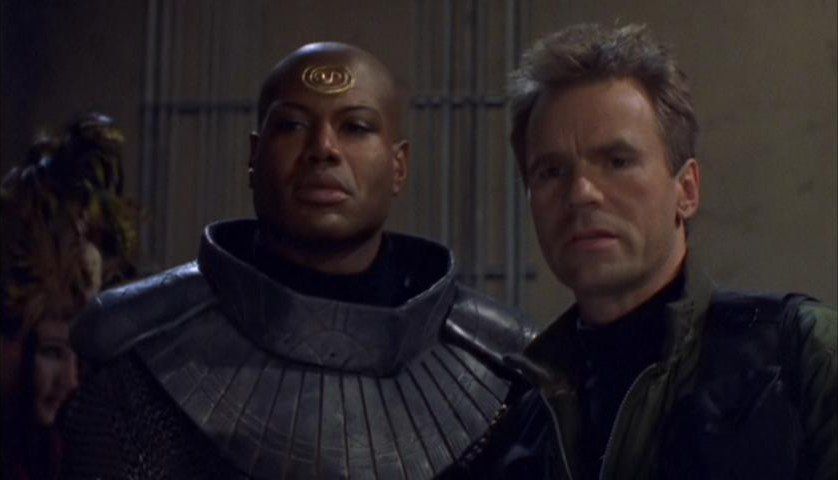
Third—and most regrettably—Teal’c receives expanded dialogue in which he tells O’Neill “You are the first to come along with powers that approach [the Goa’uld]. You are strong. Perhaps stronger than they are.” Never mind that the Jaffa have been kicking the United States Air Force’s ass regularly. No, this bit of superfluous, leftover exposition diminishes Teal’c’s decisive “Many have said that. But you are the first I believed could do it.” As originally edited, it was the heroism and personal integrity of O’Neill that motivated Teal’c to save SG-1, nothing to do with their firepower (which, to be frank, hadn’t done them much good). This revision not only decentralizes the importance of O’Neill himself, but it also makes Teal’c’s crucial change of heart shallower. Score one for the 1997 edit.
Even so, the final tally comes out heavily in favor of the 2008 version. Frequent viewing of the 1997 cut is a laborious experience and one eventually comes to share Wright’s distaste. Especially if your reproductive organs are on the… oh, never mind.
This article was first published on July 5th, 2022, on the original Companion website.
The cost of your membership has allowed us to mentor new writers and allowed us to reflect the diversity of voices within fandom. None of this is possible without you. Thank you. 🙂






